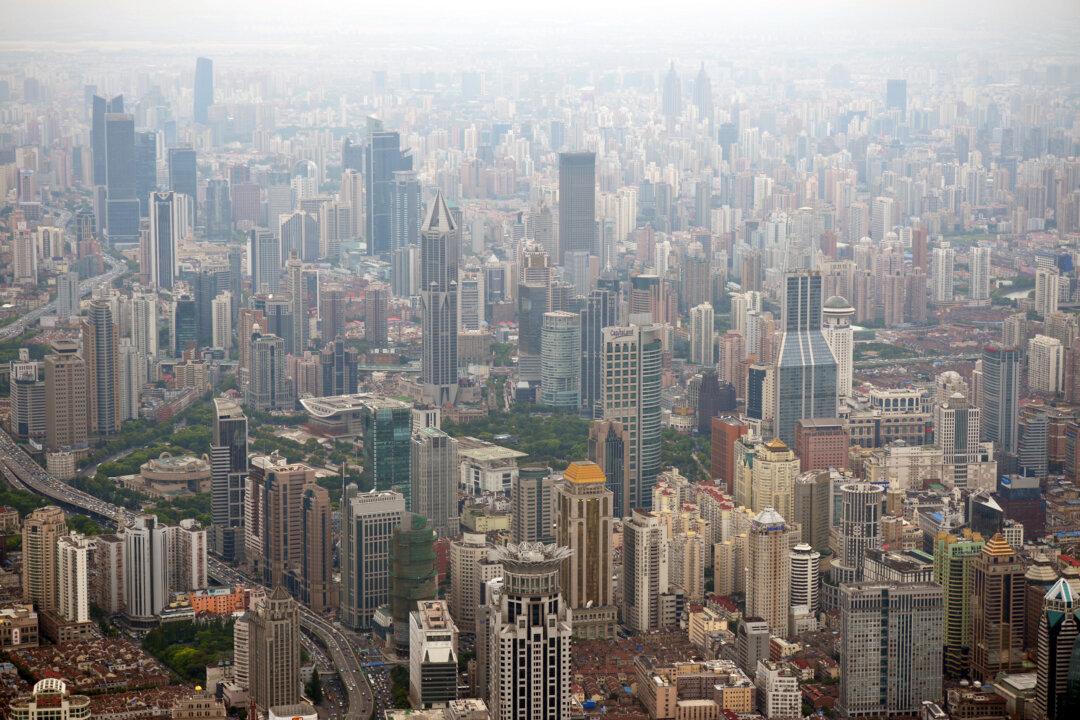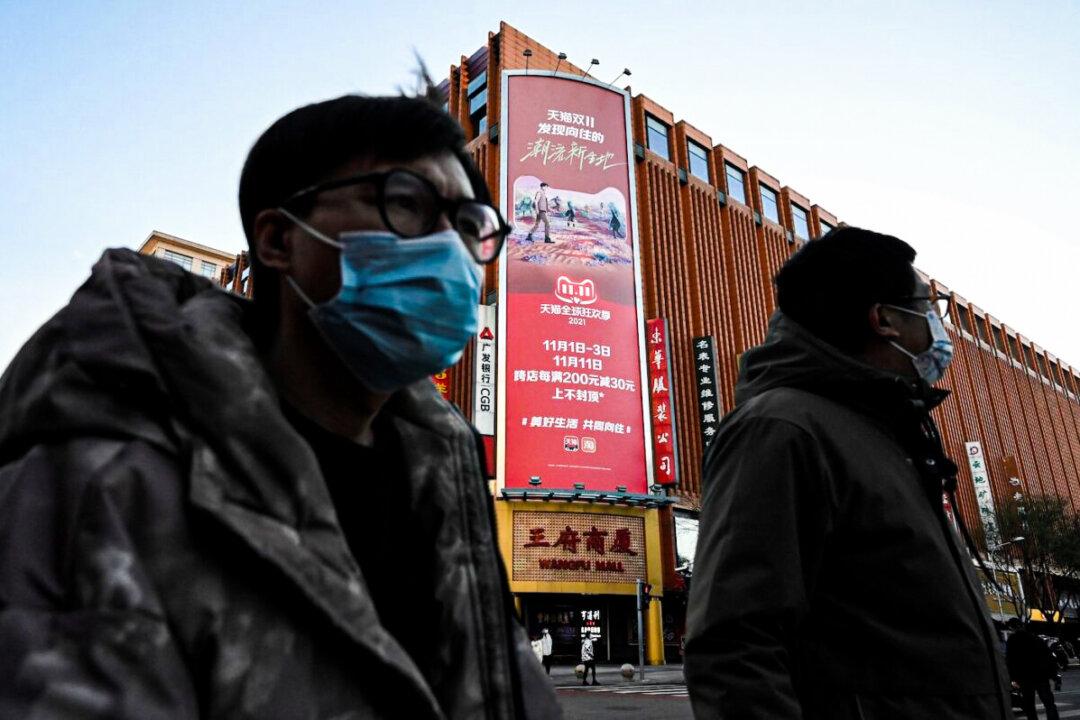For years, people who warned about the burst of China’s property market bubble appeared as if they were crying wolves. The state of the property business in the first quarter this year, however, showed that the wolves might really come this time because the three factors that helped keep China’s real property market afloat might cease to be effective. These three factors are: local governments’ reliance on land finance; real property companies’ interests; and the collective actions owners took to resist the reduction of property prices.
Oversupply in China’s Property Market
An established fact is that China’s property market has long been in a state of oversupply, and one could gauge its health with the following two sets of data.
The first set of data, provided by China Real Estate Research Association in 2012, suggested that new construction area in the country is around two billion square meters, making up half the world’s total each year; over 70%, or 1.4 billion square meters of the new construction area is for residential purposes, and over 40% of which is in first- and second-tier cities in China.
“Data revealed that the new flats in the last four years alone are enough for half the country’s population to change flats once”, and “if calculated based on a per capita housing area of 36 square meters, new flats in China can meet the housing demand of over 38 million people each year”, these were comments made by the country’s media outlets on housing inventory there.
The above figures did not include housing area completed in 2013, the second set of data that came in with three versions, each differed markedly from the others: the National Bureau of Statistics put the figure at 1.067 billion square meters; Bank of America Merrill Lynch estimated the figure to be 1.1 billion square meters; and yet another estimate was that the area of urban residential apartments reached 2.6 billion square meters in 2013. The total area of new completed apartments, even if based on the figure from the National Bureau of Statistics, is staggering indeed.
With so many flats, who are the real buyers? Judging from property prices, the vast majority of the middle class and grass-root people could not afford to purchase their own flats. Therefore, home buyers are mainly officials and wealthy people who seek to preserve their asset. This is a fact confirmed by media exposure of the “housing family” in recent years. High ranking officials were reported to have to their names a dozen or several dozens of flats; senior officials like former Railway Minister Liu Zhijun, Politburo Standing Committee member Zhou Yongkang owned even hundreds of villas.
In June 2013, there was a widespread claim that there are at least 6,000 Liu Zhijun in Beijing, meaning that in the capital city of China, there are at least 6,000 others who owned more than 300 flats. And I found this claim somewhat credible, given that the country is one that practices centralization of power and in Beijing there are just too many officials with access to all sorts of rent-seeking opportunities.
A near infinite demand of flat ownership like this was driven predominantly by the need of asset preservation—China has seen high inflation rates in the last decade and the only thing that can keep up with inflation rates is the surge in property prices, and it was said that whether or not a household bought flats and the timing they made such purchases was the cause of a wealth gap among the middle class. Now, however, a significant reduction in the need to preserve assets through property ownership emerged, for two reasons: anti-corruption and the imminent introduction of property tax.
The three factors that helped keep China’s property market afloat.
Thanks entirely to three factors, China’s massive property bubble has so far not burst; these factors are:
First: Local governments’ steadfast efforts to shore up the property bubble.
In January this year, the Ministry of Finance disclosed data on revenue and expenditures across the country in 2013. According to the Ministry, Chinese local governments remained as highly reliant on land finance as ever last year: the sum of state-owned land use rights premium was 4.1 trillion yuan, seeing a year-on-year increase of 44.6% and breaking the record of 3.15 trillion yuan in 2011; while revenue from land use rights premium continued to rise, other public revenues showed a downward trend, the nationwide public revenue in 2013 was 12.91 trillion yuan, registering a year-on-year increase of 10.1%, the lowest in the last seven years.
This downward trend continued into the first quarter this year.
How did local governments manage to keep property prices from falling? Absurd the following actions might sound, they were real. Local governments interfered with the pricing of major housing enterprises, banning these companies from lowering prices to prevent buyers from losing confidence and avoid a housing market decline.
Second: Housing Enterprises struggle to keep property prices from falling
Normally, when the prospect does not look good, the wise move would be to sell early the stock at a marked-down price and cut loss. Chinese housing enterprises, however, struggle to keep property prices from falling. Why?
Public explanations from owners of some major housing enterprises were that local governments disallowed them from doing so. China Vanke’s chairman Wang Shi stated publicly that Nanjing municipal government fined the company 40 million yuan for a reduction in real property prices in 2008. Wang added that in several key cities, local authorities conducted audits and tax inspections against Vanke after the company lowered the price of its housing. Some local government convened a meeting with housing enterprises owners, making it clear that price reduction would not be allowed.
Wang’s statement was backed by others in the industry. There were reports that in places like Changsha, Hangzhou and Ningbo, during government-convened meetings with property developers, officials urged property developers not to easily lower property price or dump their housing inventory so as to prevent the spread of a pessimistic sentiment in the market. And according to those reports, leading enterprises such as Vanke and Poly, which have multiple projects inside one city, would produce a big impact to the market if they lower their prices.
There was an account from a person who has been in the industry for a long time that recently in a certain district in Ningbo, a developer wanted to reduce property price and was told not to do so by the leader of that district who considered such a move to have a large negative impact.
However, intervention from local governments was only half of the story. Housing enterprises were also worried that a reduction in property prices would affect market confidence and result in a decline in transaction volume.
China’s property market, similar to the country’s stock market, has come to rely solely on confidence as a result of over-speculation. The characteristic of a market like this is that people would only have confidence in it when the prices are rising; as soon as the prices begin to head downward, people’s confidence would vaporize, prompting the price to stumble faster and further. To boost sale with price reduction would only cause suspicion in buyers, and they would lower the expected price even further.
According to market reports, in the first quarter this year the number of commodity housing transactions in Hangzhou was 10,112, a year-on-year decline of 37.8%; the average transaction price was 15388 yuan per square meter, a year-on-year decrease of 11.3%. Analysts said, this indicated a price reduction strategy could not bring about a rapid increase in sale volume; on the contrary, such a move seemed more like the first domino, triggering subsequent downward adjustment of property prices in Changzhou, Ningbo, Yingkou, Lianyungang and Qinhuangdao.
Third: owners’ actions against falling property prices
Apart from the two factors mentioned above, there is a third factor that helped shore up the property bubble in China: owners’ actions against falling property prices.
Starting from 2011 and beginning in Shanghai, cities across China saw property owners demanding refund after a reduction in housing prices, which was “price fraud” in the eyes of those owners. Whenever a housing enterprises intended to lower the property price, these owners would siege sales offices, demanding property developers not to go ahead with their price reduction. The latest occurrence of such dramas was in Chengdu in April this year.
With this, China’s property price regulation and control is caught in an embarrassing dilemma that came with a unique Chinese characteristic: the public would feel discontent if property prices are not reduced; a reduction in property prices would result in collective opposition from owners.
No Economic Bubble Can Last Forever
In the last four years, China’s property market was shored up by these three factors, the most important of which was local governments’ persistent efforts to sustain it.
However, all bubbles would burst someday. In April this year, China’s mainstream media began their discussion about the burst of the real property bubble. XinhuaNet raised a question on April 27: “Now that the property market showed clear signs of cooling down, can it retain its pillar status in China’s economy?”
The following set of data made it no longer possible for media outlets in China to look away:
Under the circumstances of marked reduction in property prices, the transaction volume headed downward instead of upward. In February this year, for the first time since February 2011, the increase rate of new commodity housing prices in 70 big and medium cities across China registered a double decline, both year-on-year and month-on-year. The latest figures released by the National Bureau of Statistics on April 18 showed that among the 70 big and medium cities, 14 are already recording a month-on-month zero-growth or decline in the price of new commodity housing. And the most important signal was that, during the long May 1st holiday, real property transaction volume hit new low, and in Beijing, both the transaction volume and the prices of second-handed property dropped.
It is only a matter of time when China’s property bubble bursts. The only question is how far would the price plummet, and for how long.
In the eyes of the Chinese government, should the bubble burst, the ideal scenario would be one that the price fall bit by bit over a certain period, in a fashion that the government can manage, and not a sudden and drastic plummet, causing a panicked nose-dive because that could mean disaster.
The real trouble is that in a market, supply and demand has a law of its own. Forcible intervention could only be partially effective over a given period; it is not possible to be effective at all times. Measures a government can take to regulate the economy have their limits and they are not omnipotent after all.
He Qinglian is a prominent Chinese writer and economist living in the U.S. She is the author of “China’s Pitfalls,” which concerns corruption in China’s economic reform of the 1990s, and “The Fog of Censorship: Media Control in China,” which addresses the manipulation and restriction of the press. She regularly writes on contemporary Chinese social and economic issues.
This translation is an edited version of a translation that first appeared here. Read the original article at the Voice of America, Chinese edition.





